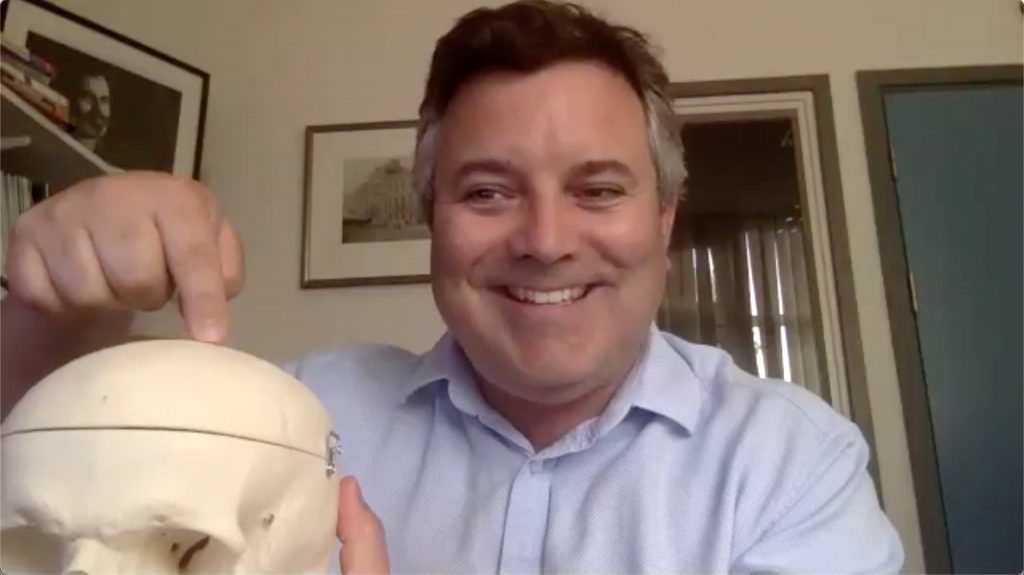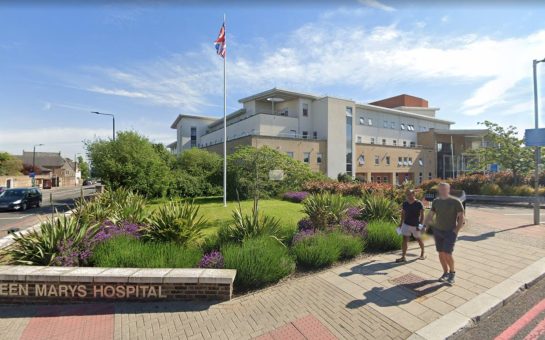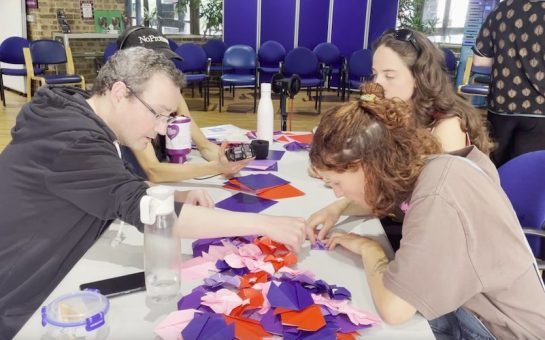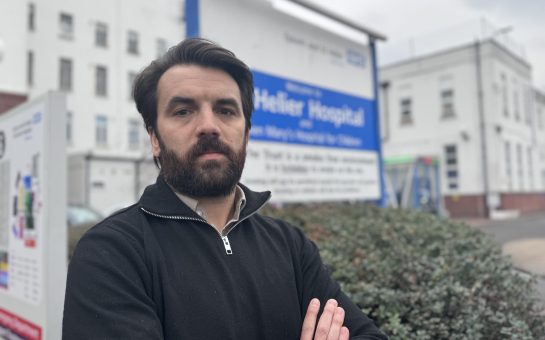In the surgical floor of St George’s University Hospital, a speech and language therapist (SLT) spends her time talking to people while utensils are being prodded into their brains.
Claire Axton specialised in treating patients following neurological incidents, which made her perfect for the job of helping neurosurgeons “map” the brain of their patients while in surgery.
To do this, she talks to them.
“The key thing we need to do is to alert the surgeon to any changes in communication,” she explained.
Awake craniotomies, the process by which a neurosurgeon removes a tumour while the patient is conscious, are much more common than most people would expect.
Axton’s role is to ensure that the neurosurgeon only cuts areas of the brain that won’t affect the patient in the long term, in a process in two stages.
She said: “The first stage is called mapping, where they literally make a map of the surface of the brain: they stimulate [the brain] with a small electrical probe, and maybe the person suddenly can’t speak, or their speech becomes slurred.
“We tell the surgeon, who will mark it with a little sterile letter or number, and then you literally do not cut into that part of the brain.
“We try and fully monitor that person’s language function all the way through.”
St George’s service is quite unique in that it offers a dedicated SLT service within its neurosurgery team.
The hospital has a long history of this kind of treatment: the first awake craniotomies ever done in the UK were in fact performed at St George’s.
Axton described how her role expands beyond surgery: “We really hate it when surgeons say, ‘can you have a bit of a chat?’
“This is not a bit of a chat, this is a skilled therapy intervention.”
As individuals, our ability to communicate is quite unique to one another, and only the keen awareness of a professional SLT can catch on critical nuances, she described.
However, a key part of Axton’s role comes with preoperative counselling, a session she conducts with the patients before the surgery, to meet the person that will be with them in the operating theatre.
Axton said: “It’s obviously quite a stressful thing, so we provide an opportunity for the patient to talk about any worries or fears they have ahead of the surgery.”
This not only helps the patient feel more at ease during the surgery, but also provides a chance for the SLT to get to know them so that the conversations during the day are relevant and engaging to the patients.
She recalled: “At one point I was supporting a mortgage advisor, and she was having a brain tumor removed while telling me about fixed rate and variable rate mortgages.
“It’s kind of mind blowing.”
Brain tumours and brain surgery
Around 12,100 people are diagnosed with a brain tumour in the UK every year, making it the ninth most common cancer.
Dr Tim Jones, a neurosurgeon at St George’s, described the value of performing awake surgeries to treat this kind of condition.
“Pretty much every part of the brain and certainly every part of the spinal cord has a function, so what we need to do is work out a way to try and remove these tumours, or as much of them as possible, whilst preserving people’s function and preserving people’s quality of life.
“Not all operations need to be done while the patient’s awake.
“It’s when the tumour, or the roots the tumour, is in particularly located in what we call eloquent tissue, by which I mean tissue which has a function.”

The key, really, is in the fact that no two brains look exactly the same, as Jones said:
“Between you and I, there are some consistencies: the same area in your brain will have the same function in the same area of my brain.
“For most people, speech functions are around the dominant hemisphere, but what we can’t do is just assume that it’s fine and damage that area with surgery or cut out a part of that brain without thinking about what the function could be.
Oftentimes the struggle is not with losing speech entirely but, as Jones said, any form of permanent deficiency in speech can be a major disability.
“You can look ‘normal’ from outside, you can walk and you can function in society.
“But if you’re unable to articulate your thoughts, your emotions to your wife, your husband, your children, your parents, your colleagues, it’s very disabling.”
The surgeon also highlights the value that meeting the SLT in advance has for the patients, as it involves them in their own care and lets them take part in the journey.
“It can actually be quite an enriching and positive experience if it’s done correctly,” he noted.
He said: “I love the fact that I get to look after people from all walks of life, and I get to see patients who come to me, understandably, with a lot of trepidation about what the future holds.
“I get to meet these people and their darkest days, and I’d like to think that through talking to them, helping them and being committed to getting them better, I can actually really turn someone’s life around.”
John’s story
Laura King speaks fondly of the team at St George’s who cared for her husband John, a chef who loved cooking and teaching.
John was diagnosed in 2015 with a brain tumour and was treated at the hospital, making it through two brain surgeries (one of them awake).
Unfortunately, he died in 2016, and Laura now leads the John King Brain Tumour Foundation at the hospital – Tim Jones, the neurosurgeon, is a trustee.
She said: “John was operated on straightaway, but it wasn’t awake surgery.
“Then he [the surgeon] came back and operated again, and he was awake during surgery.
“What was amazing about St George’s is we went in prior to the operation, so that the therapist could meet John and talk about what he liked and didn’t like and form a sort of pattern of his life.”
Axton added that it wasn’t her but her colleague Eibhlin Cleary that treated King during the surgery.
The charity she founded since John’s passing has fundraised to get a new microscope for neurosurgery and is now working towards creating a garden in the rooftop of the hospital, for patients and family members to enjoy being outside.
She concluded: “You got to keep positive, you need support, and you need to understand what’s going to happen to you.
“I don’t regret any of the things we did, I think we were very lucky with the care.
“And I think that if John were here now, he would be delighted that other people have benefited from this work.”
Featured image credit: Claire Axton




